Peter Alliss: Reflections on a life in golf
Published: Last updated:
Peter Alliss, the voice of golf and an incredible golfer in his own right, passed away on Sunday, December 6, 2020 at the age of 89. We were lucky enough to spend a lot of time with Peter over the years but the interview you’ll read below is, perhaps, our favourite and one of the most fascinating golf pieces you’ll ever read.
Peter Alliss was the voice of golf for anyone older than a teenager and before that he was a golfer skilled enough to have played – and prospered – in numerous Ryder Cups. But he will be remembered for more than anything is his wit, his alternative wisdom and his quips.
In late 2017, we visited Alliss at his Surrey home and talked everything from Hagen, Locke, Palmer and Nicklaus to the yips, Augusta National and cheating.
RELATED: Golf’s three wise men, together – Alliss, Jacobs and Steel
These are Peter Alliss’ reflections on a unique lifetime in golf…
John Huggan: Without dwelling too much on your age, you’ve been around a while and have met so many of the great names. What have been the highlights?
Peter Alliss: About a year ago, I was looking through an old Golfer’s Handbook. I worked out that I have either played with or met all but seven Open champions since 1900. I have seen Walter Hagen. I have seen Bobby Jones. I have met JH Taylor. I didn’t meet Arnaud Massy, the 1907 champion. And I didn’t meet Densmore Shute, who won in 1933. But I have seen or played with everyone since the Second World War. I find all of that quite frightening in a way.

The Open has changed beyond recognition in recent times, hasn’t it?
Back then, winning the Open Championship was just a lovely thing to do. I recall coming home from school in 1940 or ’41 and sitting around our kitchen table was Alf Perry (1935), Alf Padgham (1936), Dick Burton (1939), Reggie Whitcombe (1938), Ernest Whitcombe (2nd, 1924) and my father. My mother was in the corner wearing her apron. They were all drinking tea. I remember Ernest looking at his watch and saying he had a lesson at 5.30 and had to go.
They were all club pros back then. Giving lessons, fixing shoes and selling umbrellas. If you went into their shops, there they were. The last Open champion who did all that was, I think, Henry Cotton. You could go to Penina and find him in the shop. He would sell you a couple of golf balls.
RELATED: Andrew Cotter on working with Peter Alliss
I’m going to drag you back to the old guys you met. What were they like?
The only person who was grand was Henry Cotton. I remember hearing the stories of him and the lady who became Mrs Cotton. She fancied Henry, left her previous husband and chased him until she caught him. She was, shall we say, a very plain-looking woman. But she had enormous charm and presence.
It was a bit like, if you were marooned on a desert island, would you rather have Marilyn Monroe or Margaret Rutherford? Everyone would say Marilyn. But at the end of the day, you’d get fed up with Marilyn. And maybe Margaret could tickle a trout, skin a rabbit, build a shelter or mend your shirt. Once all thoughts of carnal behaviour have gone, Margaret might be the best choice. She virtually ‘bought’ Henry – which I know is a hard thing to say. She paid for him to play and practise whenever he wanted. He had no real financial worries. All the other players of that era were very ordinary people, in the best sense of that word.
It’s hard to put into words the financial disparity between the eras now, isn’t it?
The contrast with today is huge. I always remember Alf Perry quoted as saying he found a ‘good ball’ the week he won the Open at Muirfield. Evidently, he played the whole championship with this one ball. Now they all have three or four dozen in their lockers every week. Four gloves too.
More recently, I can remember playing a practice round with dear old Bernard Hunt. He had a glove with a massive hole in it. And that had lasted him about six bloody tournaments. Now they go through three or four a round.

What do you think about the standard of commentary in sport?
I watch a lot of television now because I can’t walk very well. I listen to all the pundits in other sports, but I never see any of them trying to make themselves better at what they do. I hear things like, ‘They done good’, or ‘They come down’. No. It’s ‘They did well’ and ‘They came down’. They have no concept of the English language, nor any desire to improve.You don’t have to be Laurence Olivier, but at least try.
However, all I hear is that I am a dinosaur. I’m not. I just like reasonably good manners. I like men to be polite to women. I’m not mad about women boxing. I don’t like it. But if you dare say so, you’re in trouble.
At the Masters, Sergio Garcia’s fiancée – now wife – was wearing the shortest skirt this side of the Mississippi. It was more suited to an ice-skating arena. But I was accused of sexism for saying so.
RELATED: Read BBC commentator Andrew Cotter’s TG column
Tell me more about your father, who was such a good player.
I loved my father dearly. He had a wonderful, gentle sense of humour. He was a very kind man. When the war kicked off in 1939, I was eight. He volunteered and was in the Dorsetshire regiment, but he had a spinal problem and was invalided out after a year. That laid him up for a couple of years. I never played golf with him after that.
I never heard my father swear. Maybe “bloody” once or twice. I never saw him naked, never saw him sitting on the loo. There was none of that back then. Those things were done in private. Today, you see films where a man is having a shave and his wife walks in and has a p*ss. That’s not for me. I don’t like it.

How good a player was your father?
A lovely golfer. But he was getting on a bit when I started to pay attention. He would come out and watch me play the 18th hole with a few balls. He used to say I only had to have 12 balls to learn how to play. I didn’t need 50. “Think” he would say to me. And he was right.
I played maybe 20 times with him all told. He was busy trying to make a living. He worked hard and we never had a holiday, although I remember going to Scarborough for a week when he was the pro at a club in Leeds.
I remember looking at the till rolls in my father’s shop. Some weeks he would take in £6. And he got a £5 retainer from the club. He had left a lot of money in Germany when we had to leave because of Hitler. He never did get it out. But when we left in 1932, my mother managed to stuff about £2,000 down her knickers.
Well, he must have done something right. Not many players hit it as well as you.
I was a good hitter but I didn’t practise much. I started with a left-hand low grip until I was about 16. He told me to change that. I was in tears for six weeks. But I kept going and got it eventually. I loved to listen to the old boys talking about the war.
My father bought three newspapers – The Chronicle, which was liberal, The Daily Mail and the Daily Mirror. He would laugh at how each made the same story seem so different. In other words, don’t believe everything you read in the newspapers. That has stayed with me.
RELATED: Best Forged Irons 2020
Does it annoy you that most of the people listening to you have no idea how good a player you were?
They have no idea. I finished playing in 1974 after the Open at Lytham. I was getting divorced and I was getting the jim-jams on the greens. Less than a decade ago, I was doing a dozen or so events on both sides of the Atlantic. I was always being asked if I had been a player.
I was never a great one for saying, ‘I was bloody good, actually. I played in eight Ryder Cups, 10 World Cups and retired when I was 38’. Most people who are famous now won’t be remembered in 25 years. I see names in the papers of guys who have played for Manchester United for 12 years. I’ve never heard of them.

I feel the same when I look at the Money List. How did that guy win $2.9m, I ask?
Exactly. I’ve done that many times with Ken Brown. We look up names and are always astonished by how much they have won. But fame goes. People will always talk about Muhammad Ali, Tiger Woods, Arnold Palmer and Jack Nicklaus.
Gary Player I find a strange one, though. What he has done is remarkable. He has a very selective memory, of course. And he often talks a lot of nonsense. But he is a remarkable man who has never really received the adulation he deserves.
What sticks out most in your memory from your own career?
Winning my first tournament, the Daks, at Little Aston. I got £400. I remember driving away from the clubhouse in my little Morris Minor singing at the top of my voice. The £400 was a year’s wages!
I’m surprised you don’t mention the Ryder Cup. Your record isn’t too shabby.
My Ryder Cup career got off to a terrible start. We should have won in 1953. It was a disaster. I was 1-up with three to play and blew it. Nerves got me. I wasn’t picked in 1955, but I was back in 1957. I played well and didn’t win a point. It was 36-hole matches back then. I laugh when I read about how many points Nick Faldo has won. He played 10 times as many games!
After 1957 I did well. My father had a great record in the Ryder Cup, too. I vaguely remember him talking about it.
You played a fair bit of golf over the years with Christy O’Connor…
I had a wonderful association with Christy in the Ryder Cup. We used to get teased that no-one else would play with us. They thought I was an arrogant b*stard and that he would have a few drinks and want to punch somebody. But I loved him dearly, even if he never came to my house and I never went to his. We just got on like egg and chips.
You played Arnold Palmer twice at the top of his game and didn’t lose.
I was up against Arnold at Lytham in 1961. It was a halved match. He holed three times from off the green, including a bunker shot at the 15th. Yet in the locker room afterwards he was telling the press how he didn’t play very well. I stuck my head around the corner and asked him about holing all those shots. He laughed.
Two years later, I played him again in Atlanta. My driving was awful, so I was down to a 3-wood to stay in play. I was 50 to 60 yards behind him. The crowd was huge and they were a bit partisan. I heard ‘Go get him Arnold, kill the son of a bitch.’ That wasn’t very nice, I thought.
I was one-up playing 17. I had a 6-iron to the green and hit it to 15-feet. Arnold hit a 9-iron almost stiff and the crowd went bananas. When I holed out he had to make his to keep the game going. The last hole was a par 3. I hit my tee-shot to 15 yards and putted stiff. He had a long putt to win the hole and halve the match. He knocked it 25-feet past! I had won.

Here’s a theory. In the early 1950s was Bobby Locke – not Ben Hogan or Sam Snead – the best player in the world?
I would say he was the best. He hardly ever missed a fairway and I’ve never seen a better putter. He was extraordinary.
I played over 100 times with him and learned a lot from him about life as well as golf. We stayed in the same hotel once. We were playing an exhibition the next day and had arranged to have breakfast at 8.15. I knocked on his door just before then. I can see him now sitting there in his underpants and vest. He had one sock on.
He was never in a rush. I was looking at my watch. But he was quite happy and we chatted away for a while. He mentioned how the Yanks had chased him out of town. I forget who he said were the ringleaders. They weren’t the best players. It was guys like Bob Goalby.
Speaking of playing in America, tell us about your experience of the Masters…
I was invited to the Masters five times and went twice. It was hard to get there in the 1950s. And expensive. Tell people that today and they think you’re mad. Plus, they didn’t really want you there anyway. I know Peter Thomson felt that way.
RELATED: How you can play Augusta National Golf Club
He told me once that the Masters is the biggest con-job in sports.
(laughs) But they do it very well. I thought it was horrible in the mid-’60s. Doug Sanders was a good pal of mine. He used to say the local caddies didn’t want the foreign players and he was right. They were all burly black fellows who never seemed to smile. They didn’t want an overseas player because they didn’t think we were good enough. Some of the players didn’t want us there either.
Does the distance the ball flies in today’s game bother you?
It’s gone too far. But I don’t worry about them playing the old courses and shooting 63 every time. I would abolish par. You all come. You all play. You’ve shot the lowest score. Congratulations. This par fetish is silly. Look at Merion. Something around par won the US Open a few years ago.
But look what they had to do to the course. It was covered in long grass.
It was a bit silly. But basically all right. And yes, I know the original design was lost. I like ‘proper’ bunkers. I was with Peter Thomson once, playing a practice round somewhere. Doug Sanders went in a bunker and moaned. All Peter said was, ‘They do call them hazards, you know’.

What did you make of the Lexi Thompson ball-marking controversy?
I’ve watched it a few times. I’m a purist in many ways, but as far as I can see she came up to her ball, saw it was in an indentation, marked her ball and moved it to the side. She cheated, for goodness sake. Or had a mental aberration. Whatever. But she didn’t put the ball back in the right place. Then, of course, we hear how the poor woman has been hounded. She bloody well cheated, in my opinion.
My theory is that the Tours don’t really want to hear about it. Bad for business.
You may be being a bit hard. But I think they want everyone to think golf is the purest and most honest game. No drugs. Bobby Locke used to take two Veganins before he went out. A strong aspirin. Every time. But there is no magic formula that will make you putt any better.
Moving on, I need you to talk about the yips. Where did it all start for you?
It began for me in the Masters in 1965. I was playing with Gene Littler. I never liked Augusta. I didn’t like the crowd. I was overwhelmed by the place. It was oppressive. I had shot 72 in the first round and was out in 36 on day two. I got a four at the 10th and was on the edge of the 11th green in two. I was about 25ft away.
I felt okay, but I sent the ball flying yards past the hole. That surprised me. I left the next one miles short. Then I jabbed it a few feet past. It was at that point, Gene looked at me and asked, ‘What the f**k are you doing?’
I said, ‘I don’t know’. It was ridiculous. Eventually I putted out and Gene asked how many I’d had. I’d no idea. He put eight or nine. I’ve looked up the records and I’m not there for the highest score. So maybe I cheated (laughs).
RELATED: Phil Kenyon saves you six shots on the greens
How did you putt next time out?
I can’t recall. But that was the start of it. There was a period in my 70s when I putted beautifully around my home course. I did it looking at the hole. I never tried a long putter. I was too proud, like Tom Watson. Sam Snead didn’t care – he would try anything.
When I was at my worst, I thought I was going to drive the ball straight over the top of the hole. Then I would leave them short! I have such admiration for Bernhard Langer. He has had the yips worse than me three or four times. I saw him when he was in his early 20s, taking five putts from nowhere. But he fixed it. Amazing.
Did it finish you early?
It did. My long game would have kept me going even with average putting.
Is that a source of some regret?
In a way. But everything worked out all right. I went up to Moor Allerton in 1970. I played in my last Open in 1974.
I had a car accident about then too, near West Hill. A lorry hit my Rolls-Royce and wrote it off. I had a neck problem after that. My lawyer said I had a case and the worst thing I could do was go back to work. So I didn’t. I think I got £25,000. I miss playing, but golf has never been everything for me. I love observing.

Isn’t that what made you so good at commentary?
Maybe. I’m an observer, not a critic. These days they swamp me with statistics. I’ve never been a numbers man. I marvel at those who are. I walk in and ask for a programme and starting sheet. And maybe something from the press centre. If I’m working, I never take my eyes off the set. So many do. I don’t understand that. I’m very observant and that’s what I talk about. Take Dubai. I’ve never heard anyone comment on the amazing buildings in the background. I would. And over there is a desert. I’d be rabbiting on about Lawrence of Arabia. I don’t want to tell people what they have just seen.
What’s the best line you’ve ever heard from a TV commentator?
One of the best was from Bruce Critchley. Jack Nicklaus was on the 16th at the Masters one year. He holed a big putt and the crowd went with him to the next tee. “The human herbaceous border moves away,” said Bruce. Marvellous.
Is the distance between players and media down to the money they make?
Yes. It’s like they are doing you a favour if they stop and talk. Back in my day, we didn’t really meet the press. They didn’t have facilities. They had a tent with a grass floor and one phone for 25 newspapers. They would be out there for six holes each and share the information. We only had a few words for them. Interviewing before and after rounds started in America.
Golf today is in many ways a science rather than an art.
Yes. Ping revolutionised things in many ways. I thought they were joke clubs when I first saw them. I used to wander into a pro’s shop and waggle a few clubs, looking for one that felt good. That was how we did it. My bag was full of odds and sods. It was all feel. Those days are gone now. Today, they are all club-fitted, whatever that means.
There’s a story about Eamonn Darcy, a Ping player. He was touring the factory in America, where there are lots of machines. Eamonn was asked what he thought at the end. ‘Ah yes,’ he said. ‘They are wonderful clubs. But they’re no fecking good if you can’t play.’ That sums up all the bullshit.
I also love the line from Sammy Davis in a movie. ‘I wouldn’t do it if I was no good at it’, he said. That just about sums it up for me.
RELATED: Padraig Harrington – My regrets, redemption and the Ryder Cup
WATCH: Peter Allis is inducted into the World Golf Hall of Fame
Peter Alliss’ Memories to Savour
Recollections of some key moments in Peter Alliss’ unprecedented career in the game.
Jacklin’s talent
“Tony Jacklin was mentally ambitious and cocky. He had talent. He curses Bill Shankland, his first boss at Potters Bar. But I bet he learned more there than he ever would have done at Sunningdale. It would be like joining the army and having a tough sergeant major. At first you would hate him, but at the end of the day he’ll have taught you how to survive.”

My first impression of Gary Player
“I was with John Jacobs when we were watching Gary chipping at Crans-sur-Sierre. He was only a kid. I asked John what the hell this lad thought he was doing. He had no chance. John told me he had beaten Gary in the South African Match Play Championship. Gary came over and asked us for some tips. We told him to enjoy his season in Europe, but that he should go home, get a nice club job and play in the local events. ‘You’re no good,’ we told him. Four years later, he won the Open. And no, he’s never forgotten what we told him!”
Remembering my father, Percy
“My father died in 1973, but he saw my playing career. I had my best period in the 1960s. But between 1954 and 1969, I won 20-odd times. The most I won was four in one year. He saw all that. But he was always very low-key. It was, ‘Well done, see what you can do if you practise’, sort of stuff. He never went bananas.”

Why Jack Nicklaus is the best ever
“If you take away Jack’s major wins, he was second and third umpteen times as well. He was remarkable. If he had been two shots better, he would have won something like 33 majors. I used to have doubts about what he would say about how he played, but over the last 10 years I’ve gone full circle. He is one of the best people to listen to about golf. He talks about how he played in a fascinating way.”

A tragic ending
“Jean Van de Velde’s collapse on the final hole of the Open at Carnoustie in 1999 is the saddest thing I’ve ever seen as a commentator. People have the audacity to write to me and say that I was making fun of him. I wasn’t. These things happen.”
Like everybody else, I loved Arnie
“Arnold Palmer and I got on very well. He was generous and we liked each other. We had a whisky or two together. He enjoyed life and he loved the girls. He was the first swashbuckler in golf and he made an impression on everybody. But he did some stupid bloody things on the course. He threw away so many titles through bravado or stupidity. He did what Adam Scott did in the Open multiple times.”

Peter Alliss’ Life in a Picture
Peter Alliss’ study is a trove of golf memorabilia. Here are three of his favourites
Caddying for Bobby Jones
”I have a picture somewhere in this room of me caddying for Bobby Jones in 1945 at Parkstone Golf Club. He was in his army uniform. He was playing with Reggie Whitcombe, my father and a fellow called Frank McGuinness. I was 14 years of age and didn’t think anything of it. I met Jones later, in about 1954, with President Eisenhower in the White House. I was playing for England in my first Canada Cup. I have pictures of us all shaking hands. Jones remembered my father. Not sure he remembered me (laughs).”
Evenings with Alliss
”You can see the posters behind me here that promoted the Evenings with Alliss. I did 110 shows and they were very successful – certainly more successful than I thought they would ever be. I didn’t expect anyone to come, but I ended up playing in front of 2,000 people once in Aberdeen. It was amazing. The first half of the show, I always told them about the Alliss family and how we got involved in golf, then we had an interval for drinks and then went into audience questions. I’d throw in a few anecdotes, talk about how I played, give them a few tips and just talk about what I fancied.”
Old Course paintings
”There’s an interesting story behind the two paintings on the wall. Years ago, I was in Rusacks Hotel in St Andrews. The hotel had a basement with a shop that sold clothes and all kinds of golf memorabilia. I lent the owner £5,000 for a business venture. In return, she gave me these two paintings of the Old Course by Donald Shearer. He’d never painted golf before. They’re worth a lot more now!”
READ NEXT: Paul Lawrie – “The reaction to my Open win was a problem for me”
-
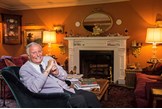 Peter Alliss, the voice of golf, at his Surrey home in December 2017.
Peter Alliss, the voice of golf, at his Surrey home in December 2017.
-
 Peter Alliss was inducted into the World Golf Hall of Fame in 2012.
Peter Alliss was inducted into the World Golf Hall of Fame in 2012.
-
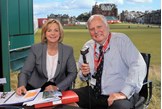 Peter Alliss working at the Women's British Open at St Andrews with Hazel Irvine.
Peter Alliss working at the Women's British Open at St Andrews with Hazel Irvine.
-
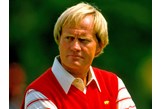 Peter Alliss believes Jack Nicklaus is the greatest golfer of all time.
Peter Alliss believes Jack Nicklaus is the greatest golfer of all time.
-
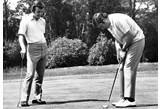 Peter Alliss, pictured with Tony Jacklin, was an exceptional player in his own right.
Peter Alliss, pictured with Tony Jacklin, was an exceptional player in his own right.
-
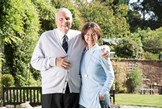 Peter Alliss at home with his wife, Jackie.
Peter Alliss at home with his wife, Jackie.
-
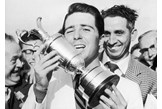 Peter Alliss didn't expect Gary Player to become a legend of the game.
Peter Alliss didn't expect Gary Player to become a legend of the game.
-
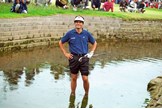 Jean Van de Veld's Open collapse was the saddest moment Peter Alliss witnessed as a golf commentator.
Jean Van de Veld's Open collapse was the saddest moment Peter Alliss witnessed as a golf commentator.
-
 Peter Alliss in his familiar surroundings.
Peter Alliss in his familiar surroundings.
-
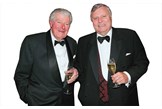 Peter Alliss and John Jacobs.
Peter Alliss and John Jacobs.
-
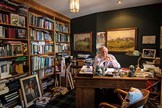 Peter Alliss in the study at his Surrey home.
Peter Alliss in the study at his Surrey home.
-
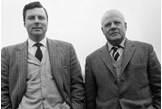 Peter Alliss with his father Percy.
Peter Alliss with his father Percy.
